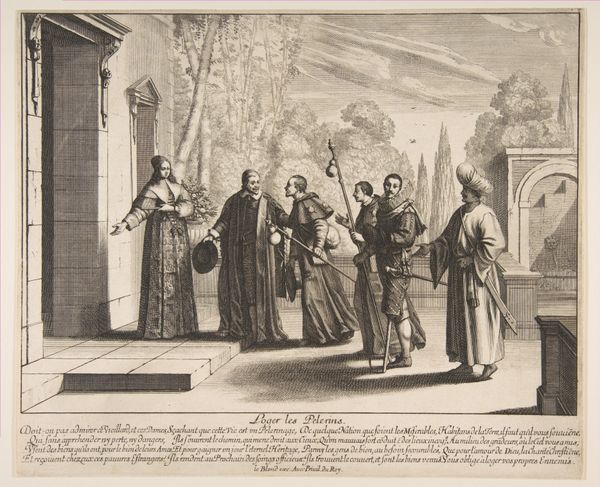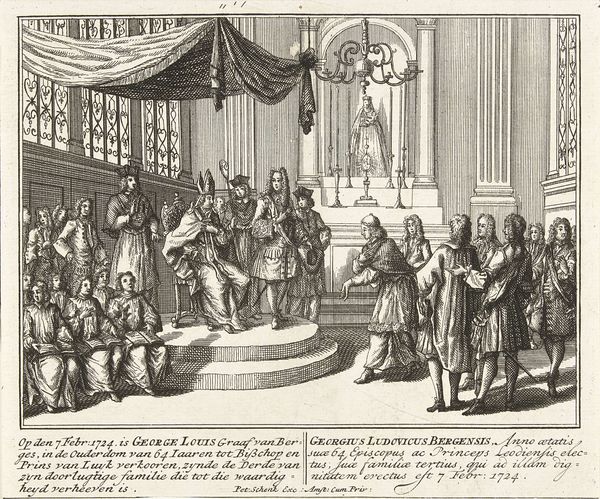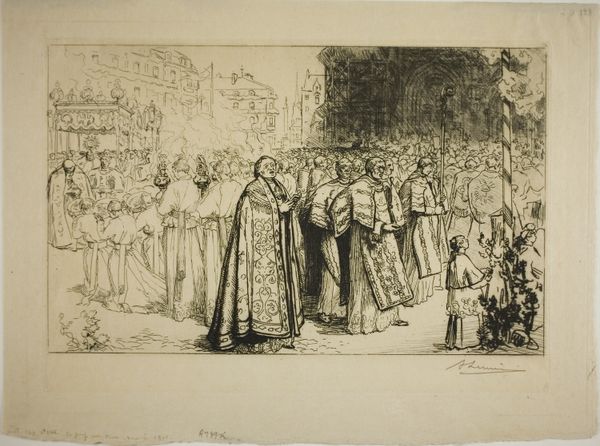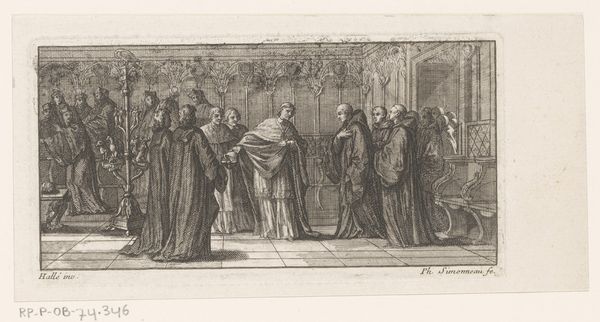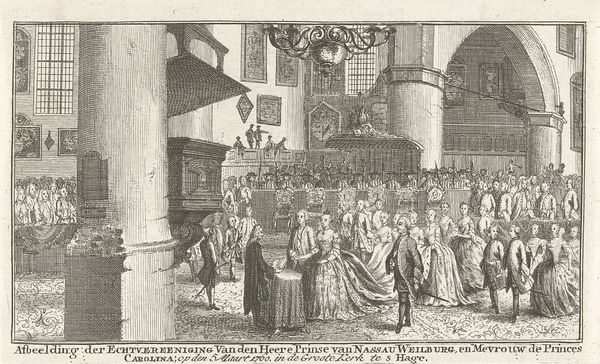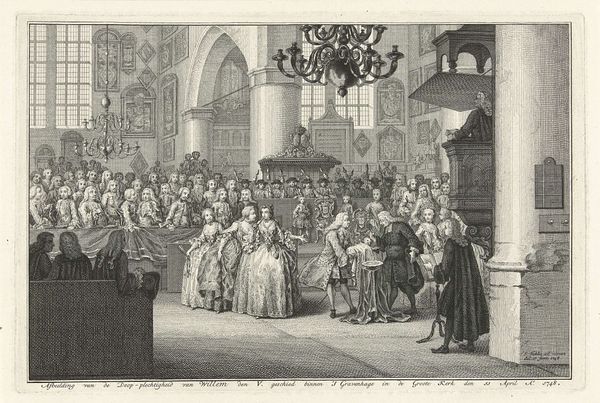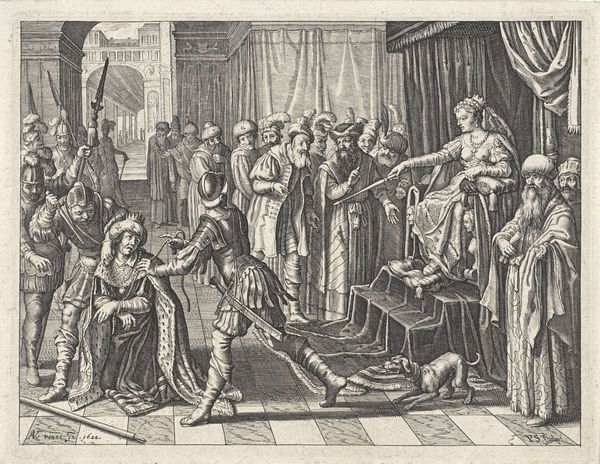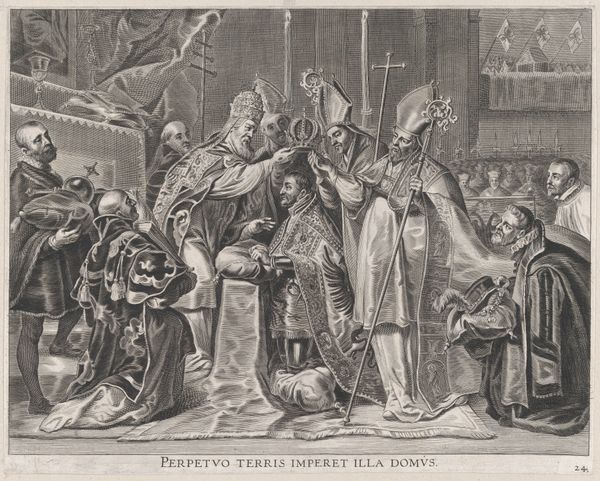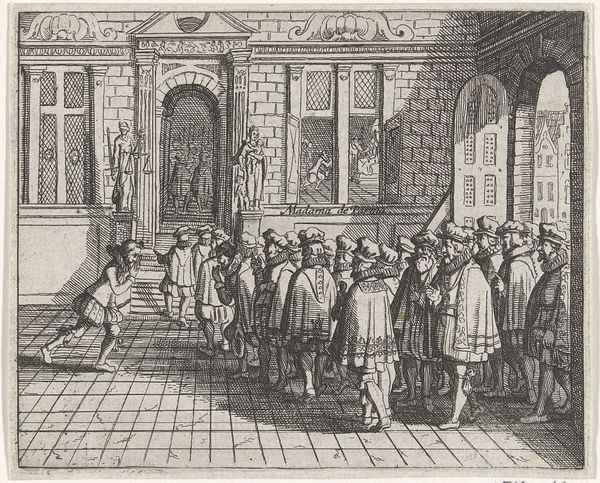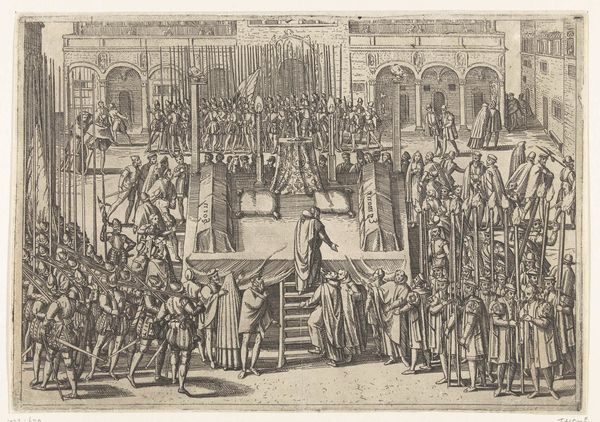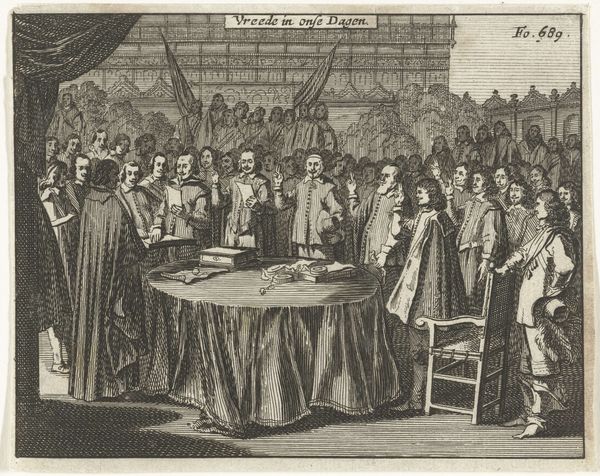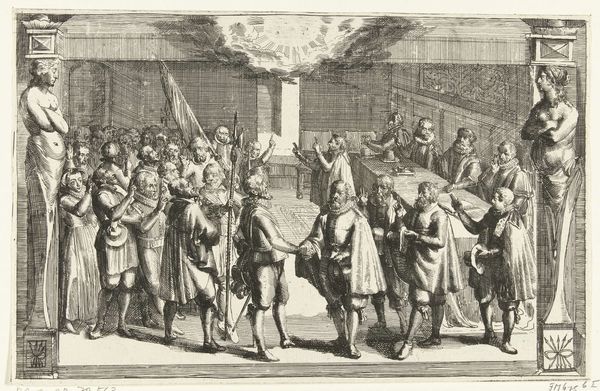
Ceremony of the Contract of Marriage between Władysław IV, King of Poland, and Marie Louise Gonzaga, Princess of Mantua, at Fontainebleau 1645
0:00
0:00
drawing, print, engraving
#
drawing
#
narrative-art
#
baroque
# print
#
history-painting
#
engraving
Dimensions: Sheet: 10 13/16 × 13 1/8 in. (27.4 × 33.3 cm)
Copyright: Public Domain
Curator: Here we have Abraham Bosse's "Ceremony of the Contract of Marriage between Władysław IV, King of Poland, and Marie Louise Gonzaga, Princess of Mantua, at Fontainebleau," an engraving dating back to 1645. It’s currently housed at the Metropolitan Museum of Art. Editor: My first thought is that despite the formal event, there is almost a dreamlike quality. The lightness of the engraving technique lends an airiness, despite the somber occasion. The composition is really quite interesting—there is the royal dais at the back of the image and yet the majority of the scene is focussed toward the front. Curator: It certainly prompts us to consider the power dynamics at play. A marriage contract wasn't just a personal matter. It had huge political ramifications, impacting territories, alliances, and even successions. The image serves to highlight the fact that marriage often became a tool for social stability in this historical context, often at the expense of those within the union. What could the various objects possibly communicate? Editor: Visually, the chandelier suspended above is quite literally illuminating the gravity of the situation: this agreement being made. Then, there is the dog... the animal appears light-hearted amidst the rigid posture of all around. Dogs have historically been understood as symbols of loyalty, which is rather fitting within the context of marriage. They serve as constant and reliable company. Perhaps this signals a deeper desire within such formal arrangements. Curator: I see what you're saying. It's fascinating how those symbols can intertwine. When we consider this event through a feminist lens, it underscores how Marie Louise Gonzaga, and women of her status, were frequently pawns in larger power games. Even the choice of location in Fontainebleau would bring to light cultural and national competition and negotiations around the Habsburg-Valois dynastic power at the time. Editor: Precisely. And in viewing art, it's as crucial to consider that beyond individual desires, there’s the pervasive social and political undertow determining our actions. It is indeed, powerful. Curator: Bosse’s rendering encapsulates a critical point in the intersection of personal lives and European politics. These kind of contracts were vital and powerful binding acts. Editor: And understanding visual vocabularies, whether it's chandeliers or dogs, enriches our understanding. They reveal what was valued, feared, or aspired to in that period. Thanks for elucidating that context, helping unlock its deeper meaning.
Comments
No comments
Be the first to comment and join the conversation on the ultimate creative platform.
